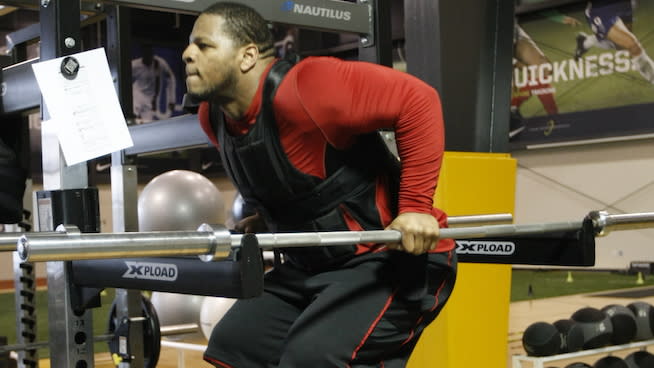Get Stronger with Isometric Training

Isometric training—static exercises that do not change the joint angle or muscle strength—can improve your strength and mobility and lower your risk of injury. The isometric phase of an exercise refers to the "rest" or pause between the eccentric (lowering) phase and the concentric (lifting) phase.
Isometric exercises create muscular tension while opposing the force of an immovable object (a.k.a., gravity.) Studies have shown that a seven-second muscle contraction increases your strength by about 5 percent.
RELATED: Control Your Opponents With Isometric Training
Like eccentric and concentric training, isometric training can be applied to virtually any exercise. Here are some of my favorites.
Isometric Exercises
Bench Press
Use a spotter.
RELATED: 3 Techniques to Increase Your Bench Press Max
Load: About 60%-70% of 1RM.
Start with the bar in the up position, arms fully extended.
Lower the bar to your chest and pause for 3 seconds.
Push the bar back to its original up position.
Sets/Reps: 3x4-6, with a 1-minute rest between sets.
Squat
Use a spotter.
Load: About 60%-70% of 1RM.
Start in upright, standing position.
With proper technique, lower your body to full squat position and pause for 3 seconds.
Return to standing position.
Sets/Reps: 3x4-6, with a 1-minute rest between sets.
Chin-Up
Can be performed with body weight or loaded with an underhand grip.
Start by pulling your chest to the bar.
Pause for 3 seconds.
Lower your body until your arms are fully extended.
Sets/Reps: 3x4-6, with a 1-minute rest between sets.
Dip
Can be performed with body weight or loaded.
Start by holding the dip bars with your arms fully extended in the "up" position.
Lower your body until your upper arms are below your elbows.
Pause for 3 seconds.
Push your body back to the up position.
Sets/Reps: 3x4-6, with a 1-minute rest between sets.
Add variety to your training by making one workout per week an "isometric exercise day," performing all your usual exercises using this isometric training strategy. You can also do a triphasic training cycle with a week or two of eccentric training, followed by one to two weeks of isometric training and one or two weeks of traditional concentric training.We like our athletes to perform one triphasic "block" every 12 weeks.
RELATED: The Importance of Triphasic Training, Part 3: The Isometric Phase
This article originally appeared on STACK.com: Get Stronger with Isometric Training

